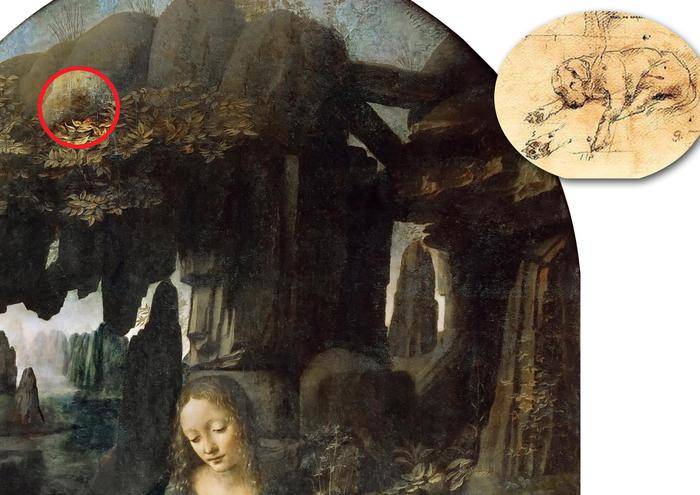Experts Discover a Dog in Leonardo's ‘Virgin of the Rocks’
The prime exemplar of a Renaissance man, Leonardo da Vinci’s talents spanned a wide range of fields, but he is renowned primarily as a painter. In fact, a handful of his works are regarded as among the great masterpieces, rivaled only by that of his contemporary, Michelangelo. His most famed artworks include the Mona Lisa, The Last Supper, and the Virgin of the Rocks.
As with the rest of his portfolio, these paintings are all suffused with symbols and social commentary. Over the years, restoration and emerging technologies have unveiled new details and allowed for new waves of interpretation. Sometimes these processes solve century-long mysteries, such as that the Mona Lisa does have eyebrows. The most recent discovery was a dog behind vegetation in the backdrop of the famed Virgin of the Rocks in the Louvre, which depicts Mary, Baby Jesus, infant John the Baptist, and an angel in the forefront.
How experts uncovered the dog
Silvano Vinceti, the president of the National Committee for the Valorization of Historic Heritage, explained, “We achieved this result with a new work (method), via the use of a mix of the most advanced technologies and simple instruments.” He elaborated, "A special magnifying glass enabled us to carefully examine every feature of the painting and then an advanced Photoshop software enabled us to overlay, decompose, and recompose it.”
Vinceti, who was at the center of the finding of Caravaggio's bones at Porto Ercole and the remains of the model for Mona Lisa in Florence, credited the discovery to Roberto Biggi, a researcher for the committee.
Why Leonardo painted a canine
According to Vinceti, the so-far-undiscovered dog peeping out from the plants in the rocky setting of the background subtly condemns the corrupt papacy of Leonardo’s time with the dog’s leash symbolizing faith in Jesus’s original message. This revelation enables a new reading of the painting.
Vinceti explained that "for Leonardo the dog has a precise meaning, 'no to disobey,' as he himself writes in one of his folios. The leash, then, is an addition because it represented in medieval and Renaissance hunts the tool that enabled the feudal lord to stop dogs eating the prey.” He continued, "For Leonardo, therefore, the dog on a leash is the symbol of man who must obey God, the divine Commandments, Jesus, the life that Jesus perfectly embodied to express Christian love.”
Of course, Leonardo was not able to express his criticism at the time in fear of Pope Innocent VIII, the Borgia popes, and the Inquisition (a Catholic Church institution for combatting heresy). Therefore, he used iconographic language.
Vincetti concluded, "Leonardo uses the painting to express his thought and request for a rigorous Christianity that may revive the example of God for the Commandments and Jesus as expressed in the Gospels."
Leonardo: Painter and Storyteller
"Up till today his paintings have been addressed from the standpoint of technique and painting style," Vinceti said, "but we have lost sight of the fact that Leonardo, through the composition of his paintings, achieved a narration, expressed a thought that becomes image.”
Leonardo did once write, “Painting is the beautiful that clothes the truth.”





































i-Italy
Facebook
Google+
This work may not be reproduced, in whole or in part, without prior written permission.
Questo lavoro non può essere riprodotto, in tutto o in parte, senza permesso scritto.